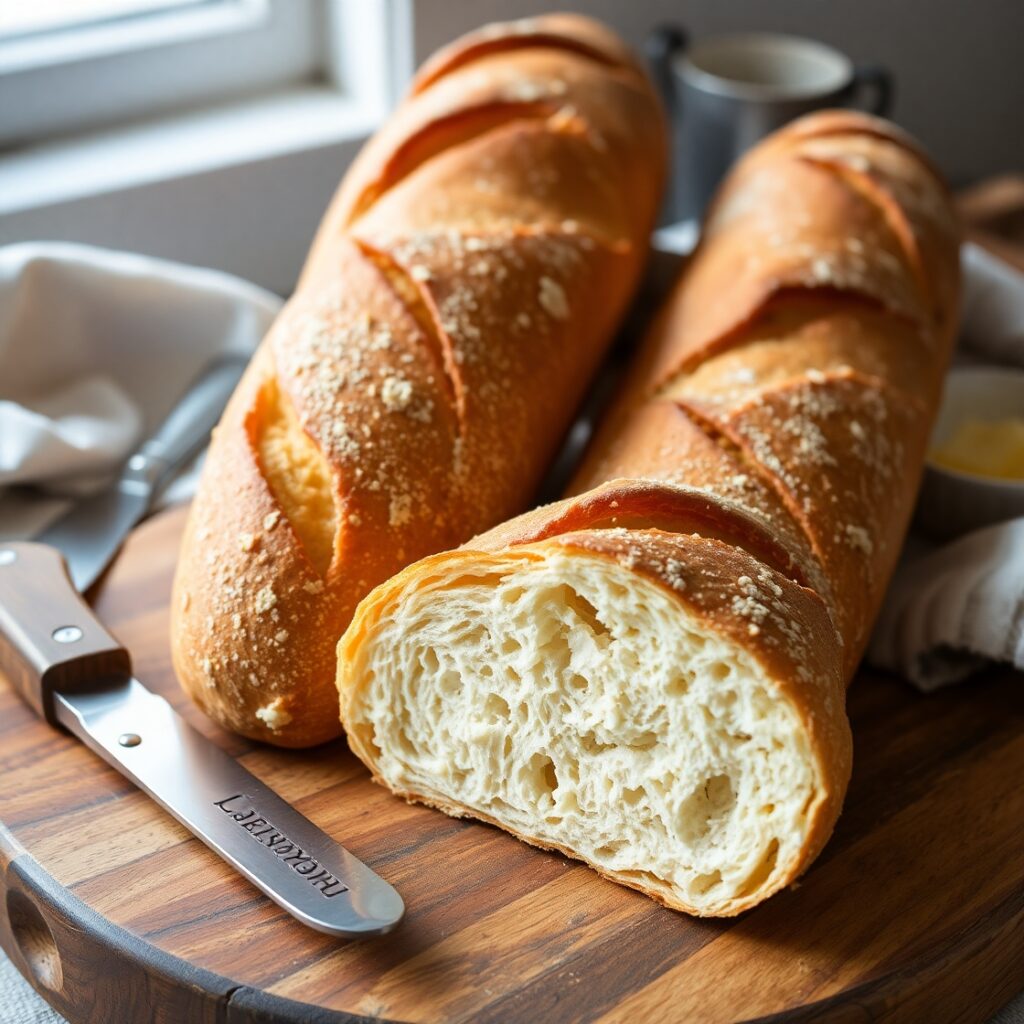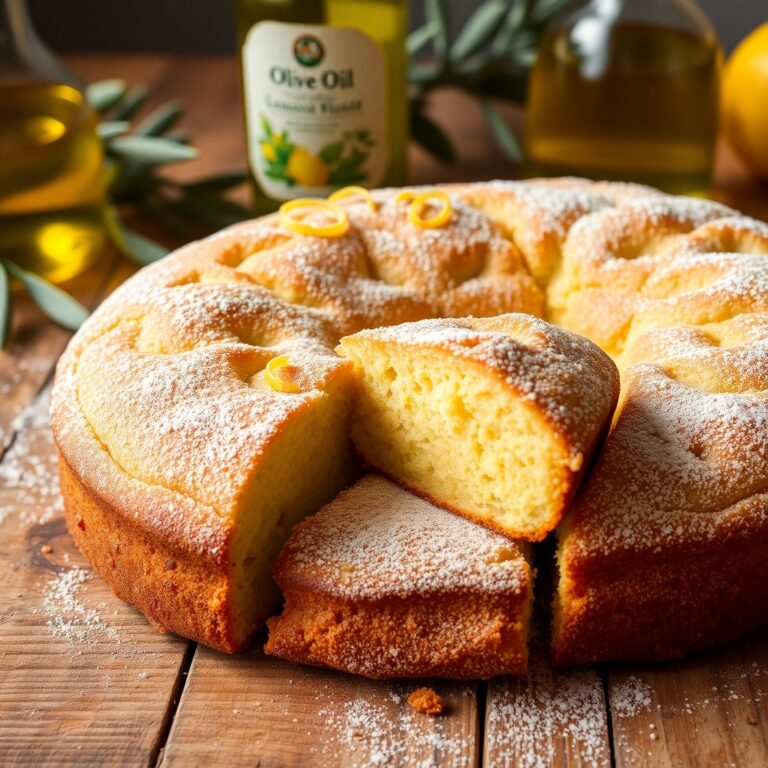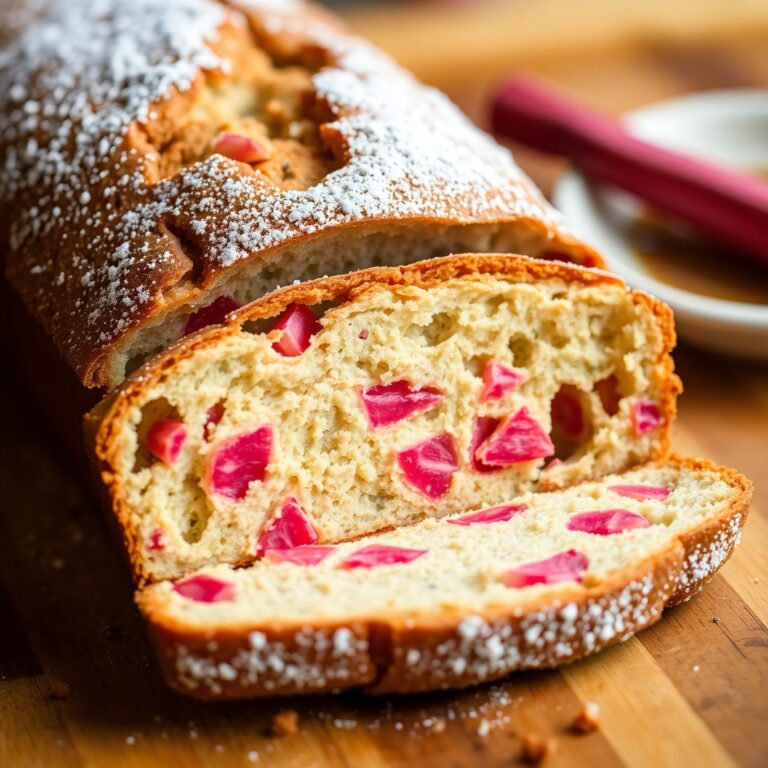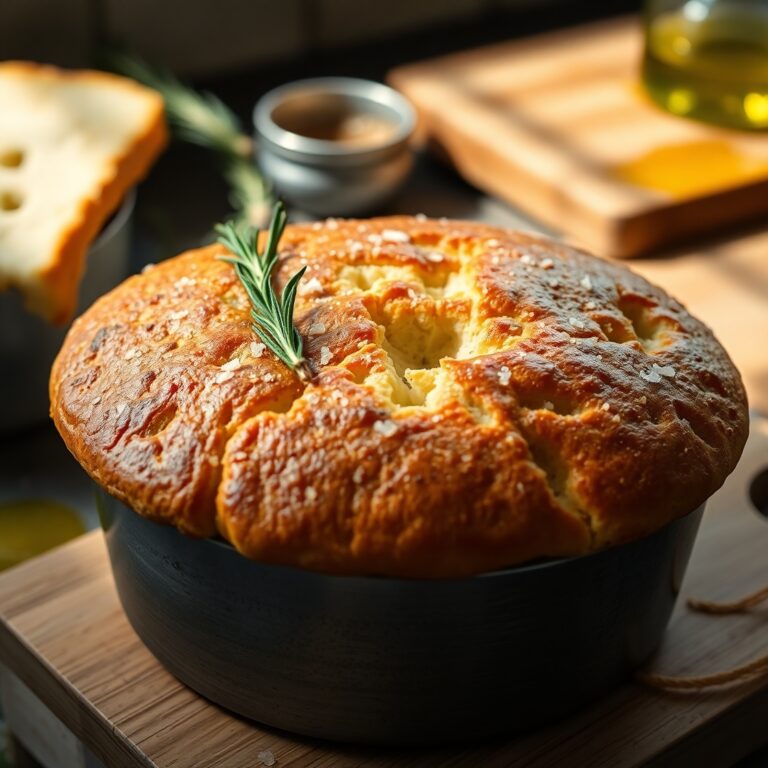There’s something magical about the smell of freshly baked bread wafting through your kitchen.
For years, I believed that making French baguettes at home was something reserved for professional bakers or those with a serious sourdough obsession. But one rainy weekend, determined to crack the code, I dusted off my stand mixer, read about poolish (a pre-ferment used for extra flavor), and committed myself to the challenge.
The result? A crisp, golden crust that cracks gently under your fingers, revealing a soft and chewy interior speckled with holes—just like the ones from the boulangerie down the street in Paris.
If you’ve ever wanted to master the art of baking baguettes at home, this is the recipe you’ve been waiting for.
Why I Love This Recipe

There’s a reason why the French baguette has stood the test of time: simplicity meets perfection.
What makes this recipe special isn’t just how delicious the final product is, but how satisfying it is to make.
It’s a three-ingredient wonder (flour, water, yeast) that transforms through careful fermentation and technique into something elegant and timeless. The delicate crust shatters when bitten, while the airy interior makes it the perfect canvas for salted butter, soft cheese, or hearty soups.
Unlike quick-bake bread recipes, baguettes require patience. That’s where the beauty lies. You learn to trust the dough, watch it rise slowly, and shape it carefully. This process allows you to connect with your food, and the results are nothing short of bakery-quality.
Even better? You don’t need fancy equipment. Just a mixing bowl, a baking stone (or tray), and a spray bottle of water for that iconic crust.
Once you bake a proper baguette at home, you’ll realize there’s no going back to supermarket loaves.
Ingredients for Baguette Recipe
At its core, a baguette uses just a few basic pantry ingredients, but the quality and method matter tremendously.
Here’s what you’ll need:
- All-purpose or bread flour: Opt for high-protein bread flour if possible (around 12-13% protein). It gives your baguette that chewy, structured crumb.
- Water: Use filtered water for best results. Room temperature or slightly cool is best to ensure a slow fermentation.
- Active dry yeast or instant yeast: Either will work. If you use active dry, it must be proofed in water first.
- Salt: Regular fine sea salt adds flavor and strengthens the gluten.
Optional but recommended:
- Poolish (preferment): A mixture of flour, water, and a pinch of yeast fermented overnight. It boosts flavor complexity and gives that beautiful holey interior.
These ingredients might seem ordinary, but it’s the technique that turns them into something extraordinary.
How Much Time Will You Need?
Baguettes aren’t a quick fix—they require a slow fermentation and several resting periods—but they are absolutely worth the wait.
Here’s a general breakdown:
- Prep time (poolish + dough mixing + bulk fermentation + shaping): 18–20 hours total, most of it inactive.
- Poolish (overnight preferment): 12–14 hours
- Mixing and initial rest: 1 hour
- Bulk fermentation: 2–3 hours
- Shaping and proofing: 1.5–2 hours
- Baking time: 20–25 minutes
So while this isn’t a recipe you can start and finish on the same afternoon, most of the time is hands-off.
How to Make This Baguette Recipe

Step 1: Prepare the Poolish (Optional but Highly Recommended)
In a bowl, mix:
- 150g flour
- 150g water
- A pinch (1/16 tsp) of yeast
Stir until combined, cover loosely, and let sit at room temperature for 12–14 hours. By morning, it should be bubbly and doubled in size.
Step 2: Make the Dough
In a large mixing bowl or stand mixer, combine:
- 500g bread flour
- 350g water
- All of your poolish (if using)
- 2 tsp salt
- 1 tsp yeast
Mix until just combined and let rest (autolyse) for 30 minutes. This allows the flour to absorb water and begin forming gluten.
Step 3: Knead and Rest
Knead the dough until smooth and elastic—about 8–10 minutes by hand or 6 minutes in a stand mixer with a dough hook.
Cover the bowl with a damp towel or plastic wrap and let the dough rise for 2–3 hours, stretching and folding it every 30 minutes to build strength.
Step 4: Pre-shape and Rest
Turn the dough onto a lightly floured surface.
Divide into three equal portions (about 300g each). Gently shape each piece into a rough oval, cover, and let them rest for 20 minutes. This relaxes the gluten, making final shaping easier.
Step 5: Final Shaping
Flatten each oval slightly, then fold the top third down and press gently. Fold the bottom third up and seal with the heel of your hand.
Turn the dough seam-side down and roll it into a log about 14 inches long. Taper the ends if you like that traditional baguette look.
Place shaped loaves on a floured linen couche or parchment-lined baking sheet, seam-side up. Cover with a towel.
Step 6: Final Proof
Let the shaped baguettes rise for 1.5 to 2 hours at room temperature until puffy. They should not double—overproofing can deflate them.
Meanwhile, preheat your oven to 475°F (245°C) with a baking stone or tray inside and a metal pan on the bottom rack.
Step 7: Scoring
Once proofed, transfer the loaves onto a peel or parchment. Using a very sharp lame or razor blade, make 3–4 diagonal slashes across the top of each baguette, about ¼ inch deep. This controls the expansion of the crust and gives you that classic look.
Step 8: Baking with Steam
Slide the baguettes into the oven and immediately pour 1 cup of hot water into the metal pan to create steam. Quickly close the door.
Bake for 20–25 minutes until deep golden brown.
Step 9: Cooling
Remove from the oven and place on a wire rack. Let them cool completely—about 1 hour—before slicing. This allows the crumb to set properly.
Substitutions
While traditional baguettes are quite specific, there’s some flexibility if needed:
- Flour: You can use all-purpose flour in place of bread flour, but the crumb may be less open and the crust slightly softer.
- Yeast: Instant yeast can be used in the same quantity as active dry. If using fresh yeast, use about 3x the amount.
- Poolish: If you skip the poolish, increase your yeast slightly and use the direct dough method. It’ll still taste great but won’t have as much flavor depth.
- Gluten-Free: Baguettes rely on strong gluten development, so gluten-free flours won’t work well here without a specialized recipe and additional binders like psyllium husk or xanthan gum.
Best Side Dishes for Baguette Recipe
A freshly baked baguette is so versatile that it works with a wide range of dishes. Here are three of my absolute favorites:
- Classic French Onion Soup
The rich, savory broth, caramelized onions, and melty Gruyère on a baguette slice—it’s a match made in culinary heaven. - Caprese Salad with Balsamic Glaze
Juicy tomatoes, fresh mozzarella, basil, and a drizzle of balsamic reduction are even better with slices of baguette on the side. - Garlic Herb Butter Mussels (Moules Marinières)
The broth is begging to be mopped up with torn pieces of crusty baguette.
Serving and Presentation Tips

The magic of a baguette isn’t just in the bake—it’s in the presentation.
Whether you’re serving it at a dinner party, packing it in a picnic basket, or simply enjoying a slice with butter at breakfast, how you serve your baguette makes a difference.
Here are a few ways to make it shine:
- Serve whole and warm: Let guests tear off pieces themselves for a rustic, communal feel. This is especially wonderful for casual dinners or wine-and-cheese nights.
- Use a serrated knife: If slicing, always use a sharp, serrated bread knife to preserve the crust and avoid crushing the delicate interior.
- Add accompaniments: Present with small bowls of herbed olive oil, compound butter, or brie and jam. These touches elevate your baguette to a centerpiece.
- Wrap in linen: When transporting or presenting, wrap in a clean linen towel or parchment paper tied with twine. It keeps the crust crisp and adds a visual charm.
Tips and Tricks to Make This Recipe Better
Want a bakery-style baguette at home? These tips will take your bread from good to unforgettable:
- Use a baking stone or steel
This retains heat and helps produce that professional-level crust and oven spring. Preheat it with the oven. - Hydration matters
Baguettes thrive on high hydration doughs (around 70–75%). It makes handling trickier, but the open crumb is worth it. - Steam your oven
Steam is essential. It delays crust formation and allows the bread to expand fully. Don’t skip the hot water pan or spray mist. - Rest your dough
Autolyse (resting flour and water before adding salt/yeast) helps gluten form naturally, resulting in a better texture. - Don’t rush fermentation
Longer proofing equals better flavor. Overnight fermentation in the fridge or using a poolish brings out complex, nutty, and tangy notes. - Practice shaping
Don’t be discouraged if your first loaves aren’t picture-perfect. Shaping improves over time and drastically affects final appearance and texture.
Common Mistakes to Avoid
Even seasoned bakers can stumble on baguettes. Here’s what to watch for:
- Overproofing
If the dough rises too much before baking, it will deflate or lack oven spring. Aim for puffy but not doubled. - Underproofing
Conversely, underproofed dough won’t rise enough and will bake up dense. Use the poke test: if the dough springs back slowly, it’s ready. - Not enough steam
A dry oven yields pale, thick crusts. Always steam during the first 10–15 minutes of baking. - Incorrect scoring
Too deep or too shallow scoring leads to uneven expansion or crust blowouts. A ¼-inch diagonal slash is the sweet spot. - Skipping the rest periods
Gluten needs time to relax between shaping steps. Rushing this makes shaping harder and results in tighter crumb.
How to Store It
Baguettes are best enjoyed fresh the day they’re baked, but here’s how to keep them for later:
- Room Temperature:
Store loosely wrapped in a paper bag for up to 2 days. Avoid plastic—it softens the crust. - Freezing:
Wrap tightly in foil or plastic wrap, then place in a zip-top freezer bag. Freeze for up to 3 months. To serve, reheat at 375°F (190°C) for 8–10 minutes straight from frozen. - Reviving Stale Baguette:
Sprinkle the crust lightly with water, then bake at 350°F (175°C) for 5–8 minutes to restore crispness.
FAQ
1. Can I make baguette dough ahead of time?
Yes! Prepare the dough and refrigerate it after the bulk fermentation stage. Bring it to room temperature before shaping and proofing.
2. Can I skip the poolish?
You can, but you’ll sacrifice some flavor complexity. If you’re short on time, a direct dough method works fine.
3. Why is my baguette crust soft after baking?
It may be due to excess moisture. Allow the baguette to cool on a wire rack so steam escapes. Avoid storing in plastic.
4. What flour is best for baguettes?
High-protein bread flour gives the best structure. If unavailable, all-purpose flour still yields good results.
5. Can I use sourdough starter instead of yeast?
Yes! You’ll need to adjust fermentation times and hydration slightly. The flavor will be tangier and more complex.

Baguette Recipe
- Total Time: 20 hours 30 minutes
- Yield: 3 baguettes
- Diet: Vegetarian
Description
Golden, crispy on the outside, light and airy on the inside—this traditional French baguette recipe uses minimal ingredients but rewards patience with bakery-quality results. With a chewy, structured crumb and that iconic shattering crust, it’s the perfect bread for soups, cheese boards, and your everyday table. Using a poolish adds rich flavor and artisanal texture, but even the direct method will produce a rustic, crusty loaf that rivals anything from a Parisian bakery. This recipe is detailed for success—even first-time bakers can master it with a little care and practice.
Ingredients
500g bread flour
350g water (plus 150g for poolish)
1 tsp active dry yeast (plus a pinch for poolish)
2 tsp fine sea salt
Optional Poolish:
150g bread flour
150g water
Pinch of yeast
Instructions
- Make the poolish: Mix flour, water, and yeast. Rest overnight.
- Combine all ingredients and autolyse (rest 30 mins).
- Knead until smooth, then rest, stretch, and fold every 30 minutes for 2 hours.
- Divide dough, pre-shape into ovals, and rest 20 minutes.
- Final shape into baguette forms and proof for 1.5–2 hours.
- Score with lame and bake on preheated stone with steam for 20–25 minutes.
- Cool on wire rack at least 1 hour before slicing.
Notes
Use a baking stone and steam for best crust.
Practice shaping technique for better results.
Let the bread cool fully before cutting—it finishes setting outside the oven.
- Prep Time: 20 minutes
- Cook Time: 25 minutes
- Category: bread
- Method: Baking
- Cuisine: french
Nutrition
- Serving Size: ~75g
- Calories: 180





